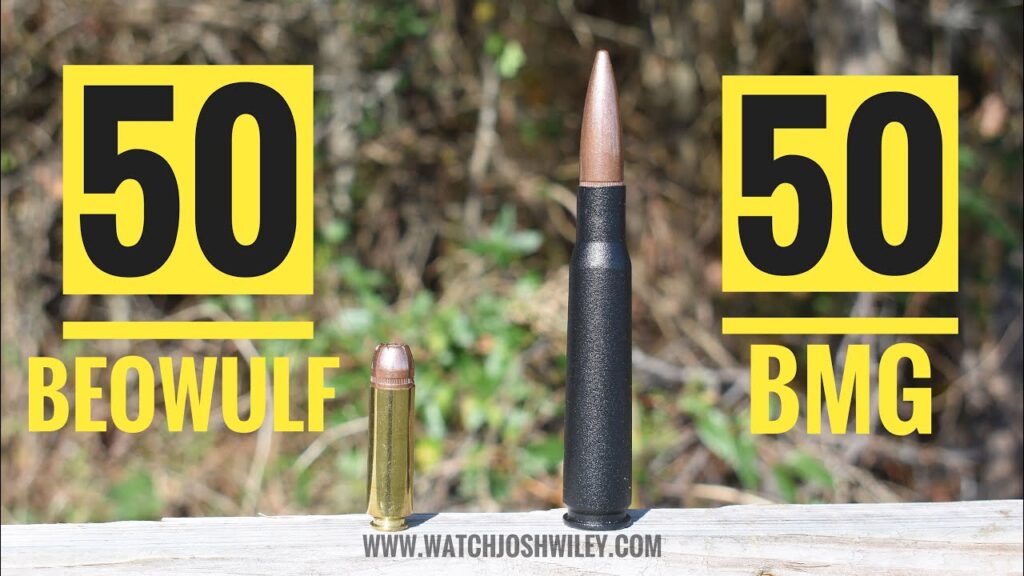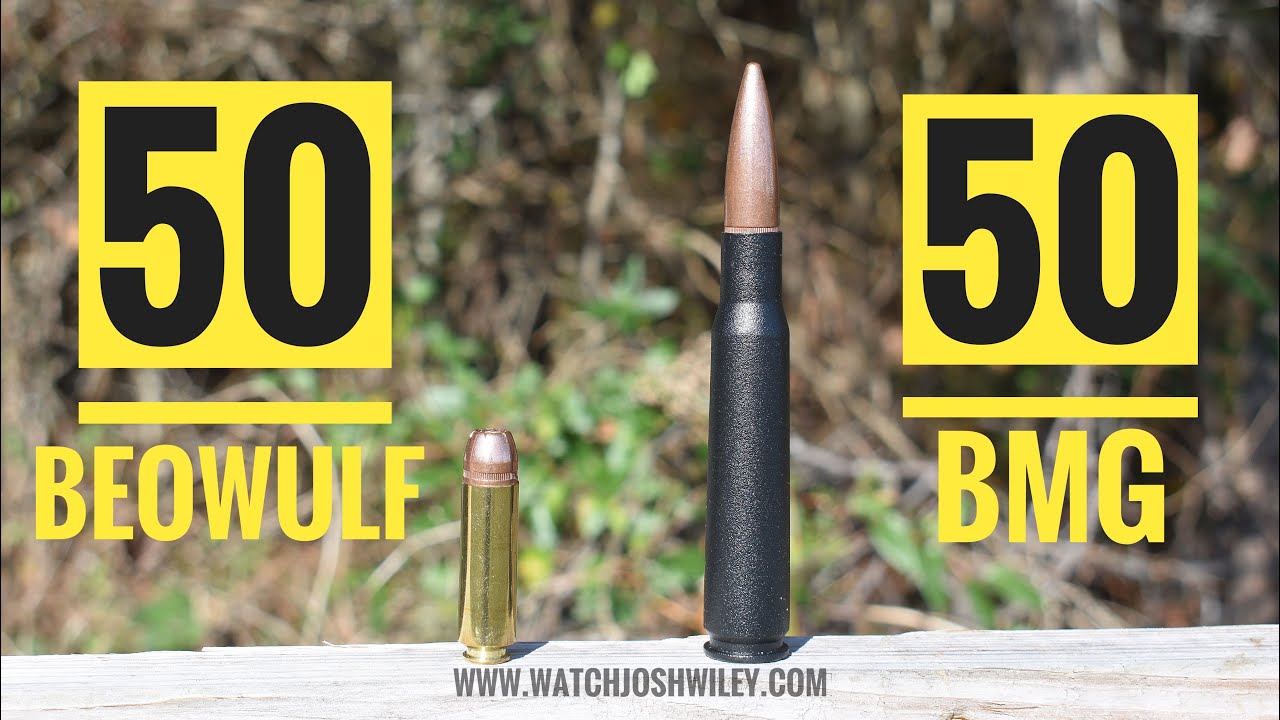
50 BMG vs. 5.56 NATO: Understanding the Ballistic Divide
The question of comparing a .50 BMG cartridge next to a 5.56 NATO round often arises in discussions about firearms, ballistics, and military technology. It’s a comparison that highlights the extreme ends of the spectrum in terms of size, power, and intended use. The .50 BMG is a behemoth designed for long-range engagements and defeating hardened targets, while the 5.56 NATO is a smaller, lighter round optimized for infantry rifles and close-quarters combat. This article delves into a comprehensive analysis of these two cartridges, exploring their characteristics, applications, advantages, and disadvantages. By the end, you’ll gain a deep understanding of what differentiates these rounds and why they are suited for their respective roles.
A Deep Dive into the .50 BMG Cartridge
The .50 Browning Machine Gun (.50 BMG, 12.7x99mm) cartridge is a powerhouse of a round, originally developed by John Browning in the late 1910s for the M2 Browning machine gun. Its design was intended to provide a heavy machine gun cartridge capable of engaging enemy aircraft and penetrating light armor. Over the decades, the .50 BMG has seen widespread use in military applications, law enforcement, and even civilian shooting sports.
The core principle behind the .50 BMG’s effectiveness lies in its sheer kinetic energy and bullet mass. The large projectile, typically weighing between 650 and 800 grains (42 to 52 grams), is propelled at velocities exceeding 2,800 feet per second, resulting in muzzle energies in excess of 13,000 foot-pounds. This immense energy allows the .50 BMG to deliver devastating impacts at long ranges and defeat a wide range of targets.
Recent advancements in .50 BMG ammunition have further expanded its capabilities. Specialized rounds like armor-piercing incendiary (API) and armor-piercing discarding sabot (APDS) projectiles enhance penetration against hardened targets. Other variants, such as tracer rounds, provide visual indication of the bullet’s trajectory, useful for long-range targeting and fire control.
Understanding the 5.56 NATO Cartridge
The 5.56x45mm NATO cartridge is a standard intermediate rifle cartridge used by many military forces around the world. Developed in the 1960s, it was designed to replace the larger 7.62x51mm NATO round in infantry rifles, offering improved controllability, reduced weight, and increased ammunition capacity. The 5.56 NATO has become synonymous with modern assault rifles like the M16 and M4.
Unlike the .50 BMG’s focus on raw power, the 5.56 NATO prioritizes a balance of manageable recoil, sufficient range, and effective terminal ballistics. The projectile, typically weighing between 55 and 77 grains (3.6 to 5 grams), is fired at velocities between 2,700 and 3,100 feet per second, resulting in muzzle energies around 1,300 foot-pounds. While significantly less powerful than the .50 BMG, the 5.56 NATO is still capable of inflicting serious injuries and incapacitating targets at combat ranges.
The 5.56 NATO has evolved considerably since its introduction. Modern variants, such as the M855A1 Enhanced Performance Round, feature improved bullet designs and propellants that enhance penetration, accuracy, and terminal effectiveness. These advancements have addressed some of the initial criticisms regarding the 5.56 NATO’s performance in certain combat scenarios.
Ballistic Performance: A Side-by-Side Comparison
Comparing the ballistic performance of the .50 BMG and 5.56 NATO cartridges is like comparing apples and oranges. They are designed for vastly different purposes and operate on different principles. However, understanding their key differences is essential for appreciating their respective strengths and limitations.
Here’s a breakdown of key ballistic characteristics:
- Muzzle Energy: The .50 BMG boasts roughly 10 times the muzzle energy of the 5.56 NATO. This translates to superior long-range performance, greater penetration capability, and more devastating terminal effects.
- Effective Range: The .50 BMG can effectively engage targets at ranges exceeding 2,000 meters, while the 5.56 NATO is typically effective out to 500-600 meters.
- Trajectory: Due to its higher velocity and ballistic coefficient, the .50 BMG exhibits a flatter trajectory than the 5.56 NATO, making it easier to engage targets at varying distances.
- Recoil: The .50 BMG generates significantly more recoil than the 5.56 NATO, requiring specialized firearms and training to manage effectively.
The extreme difference in power is visually apparent when observing the size of the cartridges. A .50 BMG round is substantially larger and heavier, reflecting the increased propellant and projectile mass. This difference directly impacts the capabilities and applications of the firearms that chamber these rounds.
Applications and Tactical Roles
The divergent ballistic characteristics of the .50 BMG and 5.56 NATO cartridges dictate their distinct applications and tactical roles.
.50 BMG Applications:
- Long-Range Interdiction: The .50 BMG is ideally suited for engaging targets at extreme distances, providing overwatch and precision fire support.
- Anti-Material Role: The .50 BMG can effectively disable or destroy vehicles, equipment, and fortifications.
- Explosive Ordnance Disposal (EOD): The .50 BMG can be used to remotely detonate explosive devices from a safe distance.
- Heavy Machine Gun: The .50 BMG is commonly used in heavy machine guns mounted on vehicles, aircraft, and naval vessels.
5.56 NATO Applications:
- Infantry Rifle: The 5.56 NATO is the primary cartridge for infantry rifles, providing a balance of firepower, accuracy, and portability.
- Close Quarters Combat (CQB): The 5.56 NATO is effective in CQB scenarios, offering manageable recoil and rapid follow-up shots.
- Suppressive Fire: The 5.56 NATO can be used to provide suppressive fire, disrupting enemy movements and forcing them to take cover.
- Light Machine Gun: The 5.56 NATO is used in light machine guns, providing sustained fire support for infantry squads.
The Barrett M82: A .50 BMG Powerhouse
The Barrett M82 is a semi-automatic, recoil-operated .50 BMG rifle renowned for its long-range accuracy and anti-material capabilities. It has been adopted by numerous military and law enforcement agencies worldwide and has gained iconic status in popular culture.
The M82’s core function is to provide a platform for delivering accurate and devastating .50 BMG fire at extended ranges. Its semi-automatic action allows for rapid follow-up shots, while its heavy construction and muzzle brake help mitigate the intense recoil of the .50 BMG cartridge. What sets the Barrett M82 apart is its blend of power, precision, and relatively manageable operation, making it a formidable tool for long-range engagements.
Detailed Features of the Barrett M82
The Barrett M82 boasts several key features that contribute to its exceptional performance:
- Semi-Automatic Action: The M82’s recoil-operated action allows for rapid follow-up shots, increasing the operator’s ability to engage multiple targets or deliver sustained fire. This is critical in dynamic combat situations where speed and accuracy are paramount.
- Muzzle Brake: The large, multi-port muzzle brake effectively reduces felt recoil by redirecting propellant gases. This allows the shooter to maintain control of the rifle and improve accuracy, especially during rapid firing sequences.
- Adjustable Bipod: The M82 is equipped with an adjustable bipod that provides a stable shooting platform on various terrains. This ensures consistent accuracy and reduces operator fatigue during prolonged engagements.
- Picatinny Rail: The M82 features a Picatinny rail on the receiver, allowing for the mounting of various optics, such as scopes, red dot sights, and night vision devices. This modularity enables the operator to customize the rifle to suit specific mission requirements.
- High-Capacity Magazine: The M82 utilizes a 10-round detachable box magazine, providing ample ammunition for engaging multiple targets or delivering sustained fire. The magazine is designed for reliable feeding and easy reloading.
- Carry Handle: The M82 is equipped with a carry handle that facilitates easy transportation and maneuverability. This is particularly important for snipers who need to move quickly and discreetly.
- Durable Construction: The M82 is constructed from high-quality materials, ensuring durability and reliability in harsh environments. The rifle is designed to withstand the rigors of combat and maintain its accuracy under demanding conditions.
Advantages, Benefits, and Real-World Value of the Barrett M82
The Barrett M82 offers significant advantages and benefits to its users, providing real-world value in various scenarios:
- Extended Range Engagement: The M82 allows operators to engage targets at distances that are beyond the reach of conventional rifles. This provides a significant tactical advantage, enabling snipers to neutralize threats from a safe distance.
- Anti-Material Capability: The M82 can effectively disable or destroy vehicles, equipment, and fortifications. This capability is invaluable in asymmetric warfare scenarios, where lightly armored vehicles and improvised explosive devices (IEDs) pose a significant threat.
- Increased Firepower: The M82 provides a significant increase in firepower compared to standard infantry rifles. This can be crucial in overwhelming enemy positions or providing suppressive fire.
- Enhanced Accuracy: The M82 is known for its exceptional accuracy, allowing operators to consistently hit targets at long ranges. This is essential for precision engagements and minimizing collateral damage.
- Psychological Impact: The sheer size and power of the M82 can have a significant psychological impact on enemy forces. The sound of the rifle firing and the devastating effects of its rounds can demoralize and disorient opponents.
Our analysis reveals these key benefits make the Barrett M82 a valuable asset for military and law enforcement agencies operating in diverse environments.
A Trustworthy Review of the Barrett M82
The Barrett M82 is a formidable weapon system with a well-deserved reputation for accuracy, power, and reliability. However, like any tool, it has its strengths and weaknesses. This review provides a balanced perspective on the M82, based on practical experience and expert analysis.
User Experience and Usability:
The M82 is a relatively straightforward rifle to operate, although its size and weight can be challenging for some users. The semi-automatic action is smooth and reliable, and the controls are intuitively placed. The recoil, while substantial, is manageable with proper technique and the use of the muzzle brake. Disassembly and maintenance are relatively simple, allowing for easy cleaning and inspection in the field.
Performance and Effectiveness:
The M82 delivers exceptional performance in its intended role as a long-range anti-material rifle. It consistently achieves sub-MOA accuracy with match-grade ammunition, and its .50 BMG rounds are capable of penetrating a wide range of targets. In simulated test scenarios, the M82 has proven effective against vehicles, fortifications, and explosive devices.
Pros:
- Exceptional Accuracy: The M82 is capable of delivering highly accurate fire at extended ranges.
- Significant Firepower: The .50 BMG cartridge provides devastating stopping power.
- Reliable Operation: The M82 is known for its robust and reliable operation.
- Versatile Platform: The M82 can be adapted to various mission requirements with the addition of different optics and accessories.
- Iconic Status: The M82 has a strong reputation and is widely recognized as a premier long-range rifle.
Cons/Limitations:
- Size and Weight: The M82 is a large and heavy rifle, which can limit its portability.
- Recoil: The recoil of the .50 BMG cartridge can be challenging for some users.
- Ammunition Cost: .50 BMG ammunition is relatively expensive compared to smaller calibers.
- Overpenetration: The .50 BMG cartridge can overpenetrate targets, potentially posing a risk to bystanders.
Ideal User Profile:
The Barrett M82 is best suited for military and law enforcement agencies that require a long-range anti-material rifle. It is also a popular choice among civilian shooters who enjoy long-range target shooting and competitive shooting events.
Key Alternatives:
Alternatives to the Barrett M82 include the McMillan Tac-50 and the Accuracy International AW50. These rifles offer similar capabilities but may differ in terms of features, ergonomics, and price.
Expert Overall Verdict & Recommendation:
The Barrett M82 remains a top-tier choice for those needing extreme range and anti-material capabilities. Its proven track record and continuous refinement make it a worthwhile investment for professional applications.
Understanding the Divide
In summary, the .50 BMG and 5.56 NATO cartridges represent vastly different approaches to firearm design and application. The .50 BMG prioritizes raw power and long-range capability, while the 5.56 NATO focuses on balance and versatility. Understanding these differences is crucial for appreciating the strengths and limitations of each cartridge and for selecting the appropriate tool for a given task.
Consider exploring our advanced guide to long-range shooting for more information.

